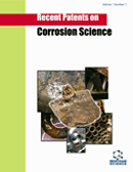Abstract
Recently, nanoparticle-functionalized graphene materials have been in the
spotlight due to their exceptional properties. A pristine graphene sheet is an attractive
candidate for the dispersion of nanoparticles due to its large active surface area
compared to other carbon allotropes. Moreover, pristine graphene possesses electrical
and mechanical strength, which gives it a unique architecture. The chemical
functionalization of graphene intends to revamp its properties and elevate its use in
multiple applications by incorporating different functional groups. There are two main
approaches to the functionalization process, either based on covalent or noncovalent.
This chapter elaborates on the major strategies employed for the nanoparticles
functionalized graphene. The precursors of nanoparticles are metal salts which are
reduced in the solvent of the desired substrate. The strategies above involve the
deposition of metal nanoparticles, metal oxide nanoparticles, and quantum dots on
graphene substrate. The functionalization of graphene improves its dispersion capacity
and sets forth new properties, which broadens its scope of applications. Furthermore,
we aim to focus on the potential of materials derived from nanoparticle
functionalization in various applications such as wastewater management, biomedical
devices, photocatalysis, food additives detection, supercapacitors, electrochemical gas
sensors, and energy storage, flexible electronics, photonics, photovoltaic systems, and
catalysts. We aspire that the readers will learn the synthetic strategies for the
functionalization of graphene along with guidance and inspiration on the emerging
trends towards applications of interest. This chapter surveys various properties and
applications of nanoparticle-functionalized graphene.






















